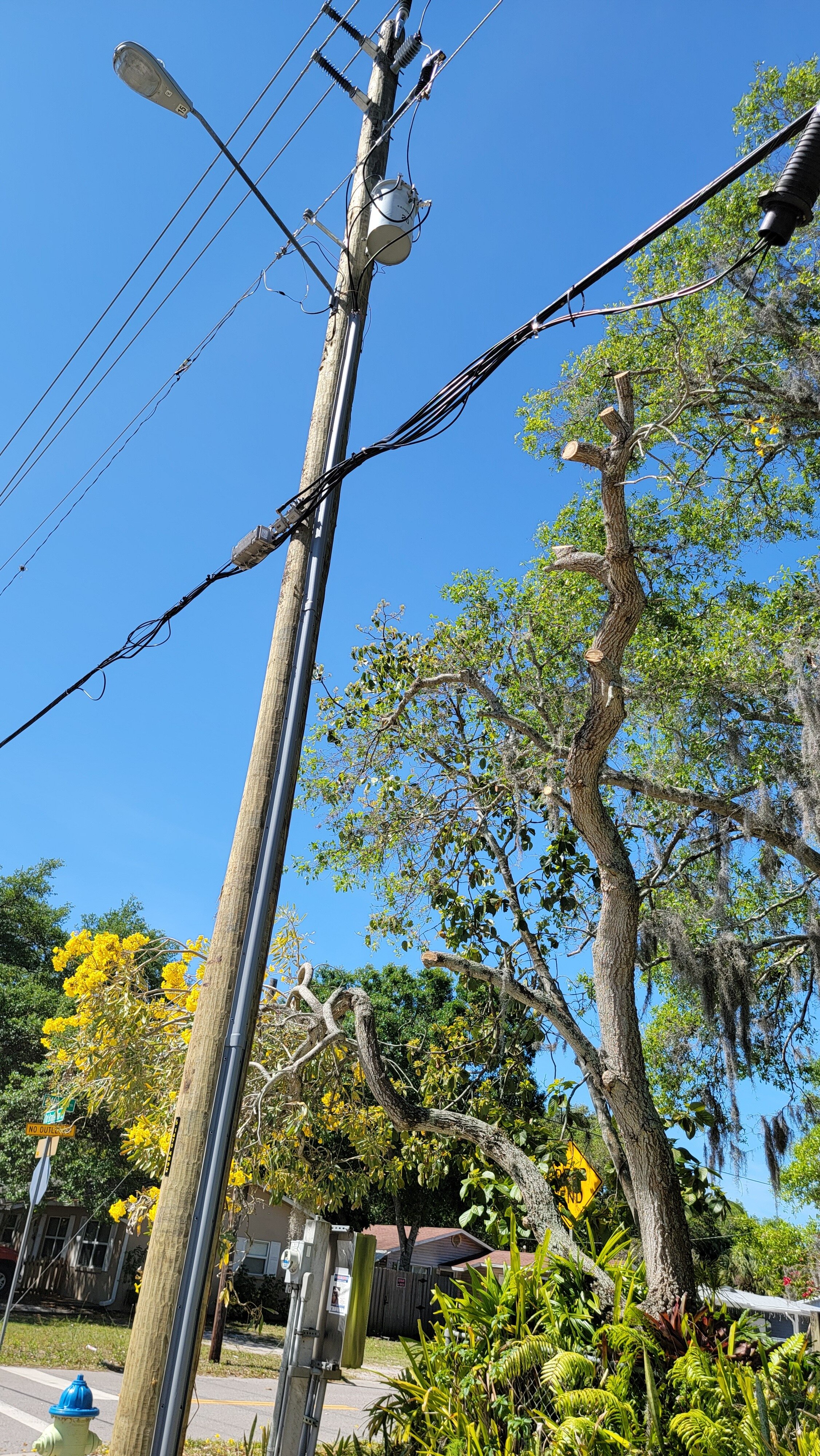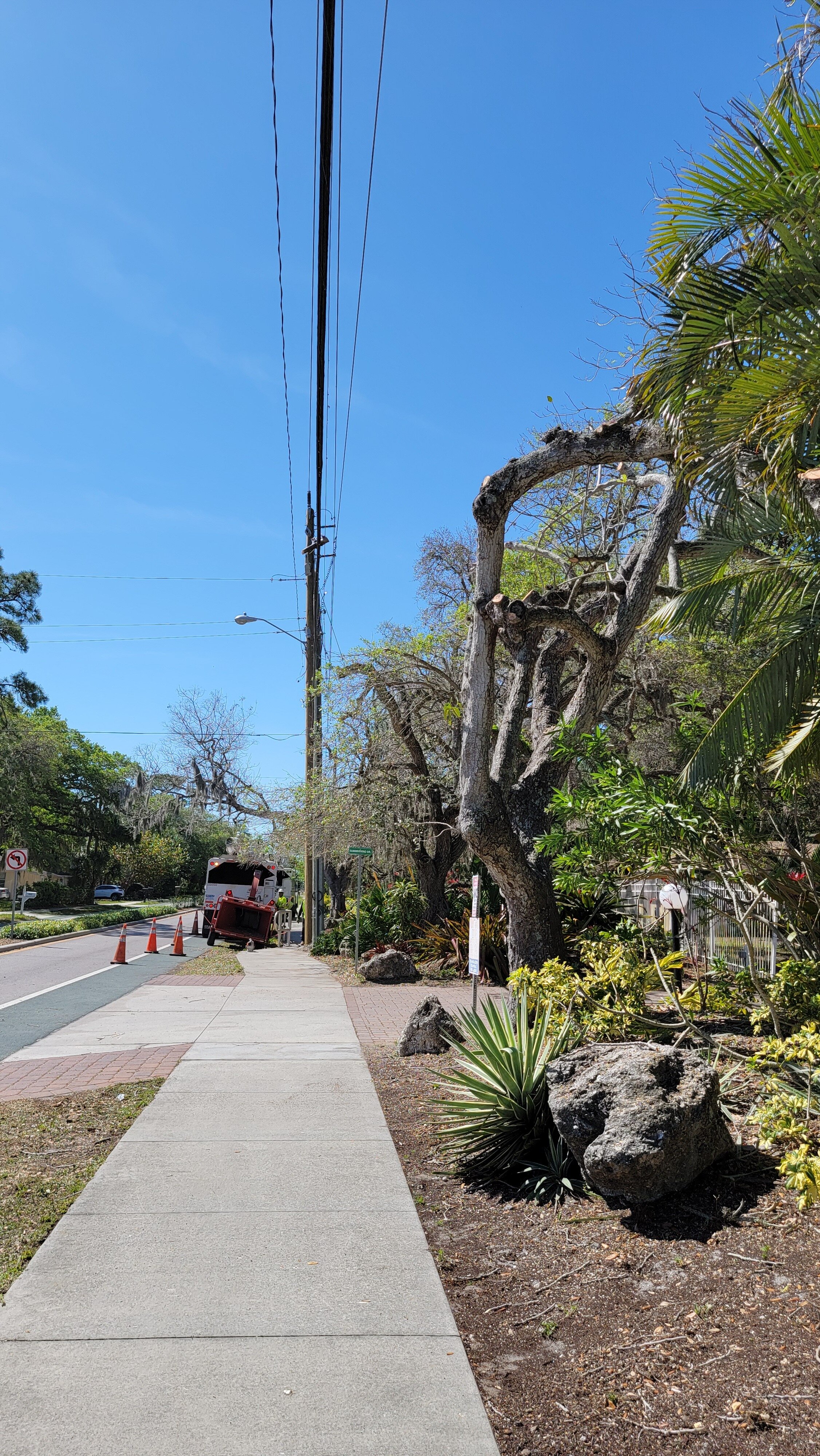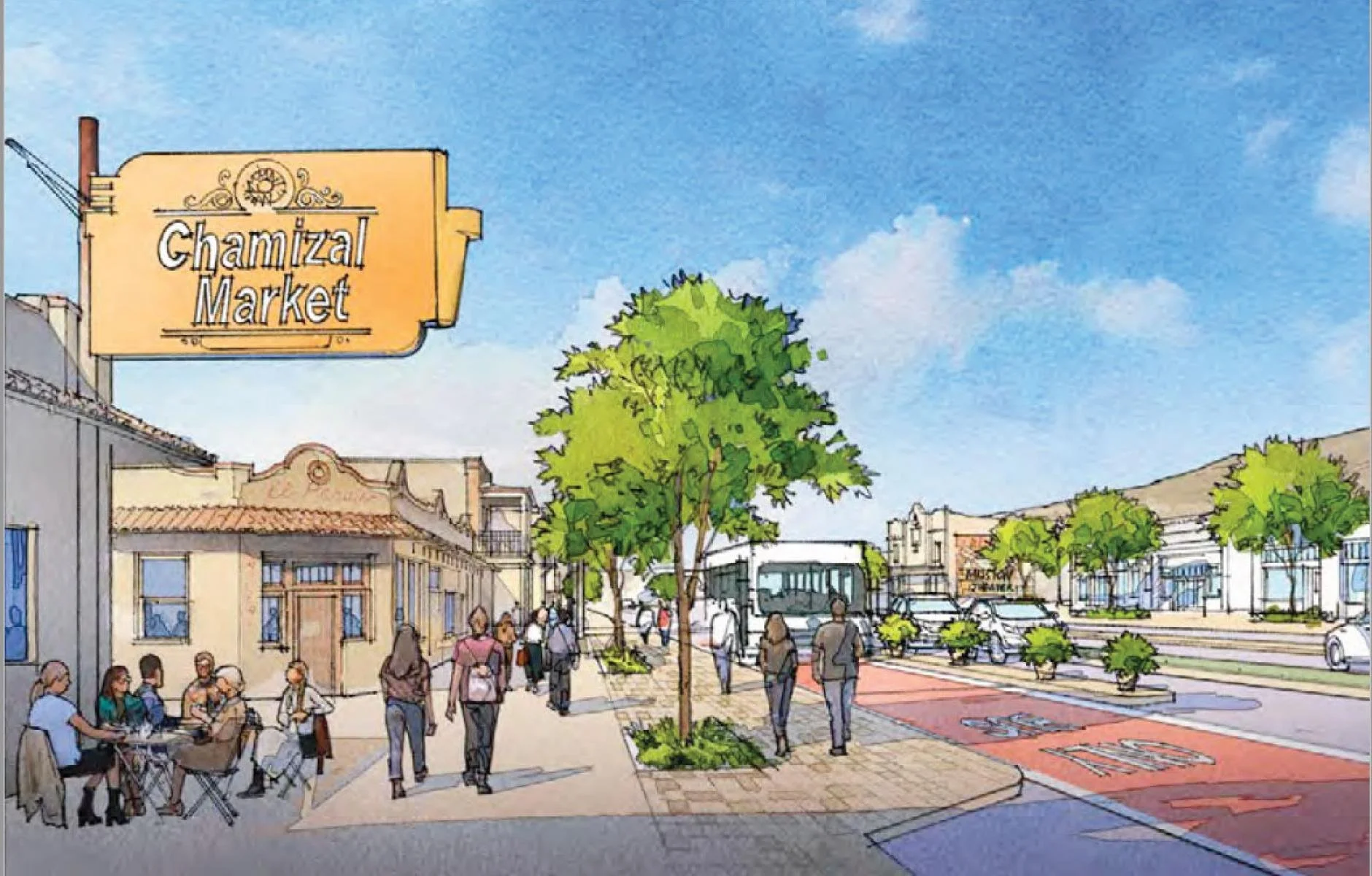When "Easy to Maintain" Shouldn't Be the Goal
I live in coastal Florida, and power outages as a result of storms are a common occurrence. As a result, the local power company, Florida Power and Light (FPL), is understandably concerned with keeping hazards away from its overhead wires, and with maintaining easy access to those wires for workers when they need to come make repairs. I get it.
However, last weekend I walked to the corner to be greeted by a truly unpleasant sight. A crew of tree trimmers hired by FPL had come through to, ostensibly, clear branches away from power lines along half a mile of the local collector street. The way they did it can charitably be described as a “hack job.”
Branches have been sawed off of healthy trees with abandon, in some cases in ways that are likely to do considerable harm to the tree, or at least leave it lopsided and unsightly. Shade trees that used to overhang the sidewalk have been butchered. I saw several palms that had been completely decapitated with the soon-to-be-dead trunks left standing. (Update: On a later visit, at least a couple of these trunks had been removed.)
This isn’t just an eyesore. Street trees are a quality of life issue, particularly for those of us who walk. In the unforgiving climate of Southwest Florida, shade is almost non-negotiable. That means we need trees—substantial ones—that shade the sidewalk even during the summer months when afternoon shadows are short.
A bus stop in Florida that isn’t in the shade is a miserable experience.
The role of street trees in producing a safer environment is also well documented. Trees are a great traffic-calming device: they reduce the perceived width of the right-of-way as well as block some sight lines, both of which cause drivers to instinctively slow down to safer speeds. But it doesn’t work if you have a large “clear zone” adjacent to the roadway. The clear zone is a hallmark of the ill-conceived 20th century engineering dogma of “forgiving design.” But vegetation isn’t always cleared away from the edge of the street for traffic engineering reasons; sometimes it’s the demand of an ill-informed fire department, and in this case it’s a side effect of the power company’s tree trimming. The result is the same: all else equal, it’s likely to induce more speeding.
All this is also a dollars-and-cents issue. Street trees produce value in a host of both direct (increased real-estate value) and indirect (ecosystem services, cooling, shade) ways. They literally enrich our communities. When they’re hacked away at in an unsightly manner, real value is being lost.
It’s common in older neighborhoods around here for trees to completely span the roadway to create a tunnel effect, and in fact streets like this are prized for their beauty and comfort. The County has a “canopy street” designation that earns you a special sign. Yet it’s clear that to FPL, big leafy branches can look less like an amenity than an obstacle to doing the one specific task FPL cares about.
Trees form a continuous canopy over this shady street in Sarasota.
The Need to Build an Ethic of Care Into Institutions
Nobody involved in this decision was malicious. Just thoughtless, and lacking skin in the game. These were people who don’t live in my neighborhood, sending out a crew of workers who don’t live in the neighborhood, to do one thing and only one thing. Simple instructions, simple results.
One common response I’ve heard is that each individual owner is responsible for pruning their own trees, and that it’s only when they fail to take adequate care of their property that the power company shows up and is forced to do a quick-and-dirty job of it. Yet I heard stories on Nextdoor (as part of a rage-filled thread about the tree destruction) of people who were told by FPL, “Trim your own trees away from the wires as carefully as you want to do it, and then our workers will leave them alone,” only to find that when workers showed up to do the whole street, they hacked away at those owners’ trees all the same.
Nor is it fair to simply leave responsibility for something (shade) that clearly affects the quality of the public realm in the hands of private property owners. To do so all but guarantees that a pleasant public realm will be a privilege of those who live in well-to-do neighborhoods, while streets in poor neighborhoods will accumulate dead and dying trees, crumbling sidewalks, or whatever it is the homeowners can’t afford (in money or time) to address. This is no solution, for basic fairness or for growing community prosperity.
Instead, we need to build an ethic of care into our local institutions from top to bottom. (And, of course, we must hold contractors we hire, or partners like the electric utility, accountable to that ethic in their work for the public, too.) The city should take responsibility for getting the factors right that make public spaces lovable and worthy of care. This means adopting something more like Disney World’s approach to maintenance: an obsessive, never-ending attention to detail.
Doing basic maintenance with an ethic of care is harder work than doing a hack job. In the case of trees, it means that pruning needs to be done more often and with finer attention to detail. This costs more money in the short run. But it will pay off in the long run in all the value that those trees create.
The City of Sarasota currently has a mature tree pilot program in which they will reimburse residents up to $500 for the cost of purchasing and planting a larger shade tree on their property if it’s next to the street or sidewalk (i.e. within the public right-of-way). The reason this program exists is all the benefits of street trees I listed above. Someone clearly recognized that those benefits are worth spending public dollars on.
If we’re going to do that, we can sure as heck also do a better job of caring for the trees we’ve already got.
(All photos by Daniel Herriges.)














Given all that trees do, cities should be enthusiastically planting tons of them, everywhere they possibly can. And yet, most places aren’t. What gives?